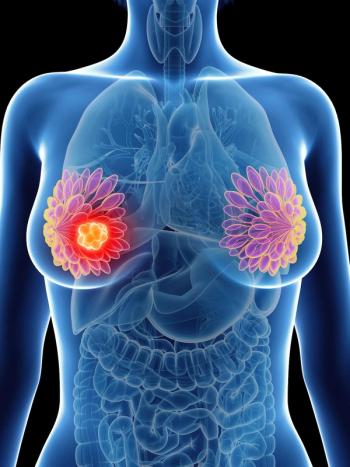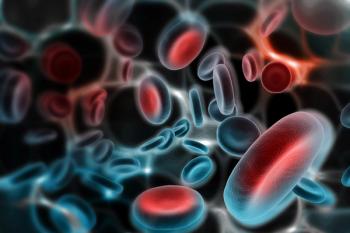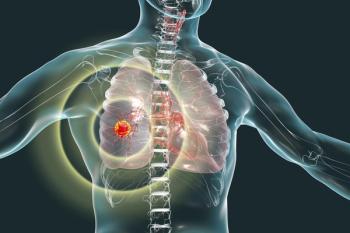
AI-Based Model Demonstrates Potential Clinical Application in Bladder Cancer
An artificial intelligence-based model for detecting lymph node metastases appears to identify tumor micrometastases in bladder cancer that pathologists may miss while classifying patient results as negative.
An artificial intelligence (AI)–based lymph node metastases diagnostic model (LNMDM) demonstrated accuracy, generalizability, and clinical potential to help avoid misdiagnosis for pathologists in the management of bladder cancer, according to findings from a Chinese study published in Lancet Oncology.
Across 5 validations sets, the area under the curve (AUC) for the diagnostic sensitivity of the LNMDM ranged from 0.978 (95% CI, 0.960-0.996) to 0.998 (95% CI, 0.996-1.000). The diagnostic sensitivity of the LNMDM (0.983; 95% CI, 0.941-0.998) was notably higher than those of junior pathologists (0.906; 95% CI, 0.871-0.934) and senior pathologists (0.947; 95% CI, 0.919-0.968). Additionally, the AI model increased sensitivity for junior pathologists from 0.906 without AI to 0.953 with AI (P <.0001), and 0.946 to 0.986 for senior pathologists (P = .00012).
The LNMDM continued to yield an AUC of 0.943 (95% CI, 0.918-0.969), a sensitivity of 0.943 (95% CI, 0.891-0.975), and a specificity of 0.819 (95% CI, 0.763-0.866) for the breast cancer set in a multi-cancer test. For a prostate cancer dataset, the AUC was 0.922 (95% CI, 0.884-0.960), the sensitivity was 0.955 (95% CI, 0.889-0.988), and the specificity was 0.833 (95% CI, 0.785-0.875).
The LNMDM detected tumor metastases in 13 patients in the validation sets whom pathologists classified as negative for lymph node metastases.
With the LNMDM maintaining 100% sensitivity, pathologists were able to exclude 80% to 92% of negative slides in different validation sets.
“The LNMDM achieved satisfactory results, making it a worthwhile addition to other AI clinical tools used for automated analysis of pathology slides,” the study authors stated. “The LNMDM was able to detect tumor metastases, particularly micrometastases, in lymph nodes. In cross-center, cross-equipment, and multi-cancer datasets, the LNMDM maintained satisfactory performance.”
Investigators of the retrospective, multi-center diagnostic study assessed the LNMDM in patients with bladder cancer who underwent radical cystectomy and pelvic lymph node dissection and had availability of whole slide images of lymph node sections.
Patients treated at 2 hospitals were included in an internal validation set for each hospital, and patients treated at 3 other hospitals were included in external validation sets. Altogether, investigators used these 5 validation sets to compare performance between the LNMDM and pathologists. Investigators also collected findings from a breast cancer dataset and a prostate cancer dataset for a multi-cancer test.
The primary end point of the trial was the diagnostic sensitivity as observed in 4 prespecified groups: the validations sets, the single lymph node test set, the multi-cancer test set, and the subset comparing the performances between pathologists and the LNMDM. Secondary end points included specificity, accuracy, positive predictive value (PPV), and negative predictive value (NPV).
Investigators included a total of 998 patients who had a median age of 64 years (interquartile range, 56-72). In the overall population, most patients were male (88%), did not have lymph node metastases (73%), had urothelial carcinoma (93%), and did not receive neoadjuvant chemotherapy (86%).
In the single lymph node test set, the LNMDM yielded an AUC of 0.995 (95% CI, 0.991-0.998). In this dataset, the accuracy was 0.964 (95% CI, 0.945-0.978), the sensitivity was 0.960 (95% CI, 0.916-0.985), and the specificity was 0.966 (95% CI, 0.943-0.981). Additionally, the PPV was 0.912 (95% CI, 0.857-0.951), and the NPV was 0.985 (95% CI, 0.967-0.994).
Investigators conducted a post hoc subgroup analysis to test whether the LNMDM could identify positive lymph nodes following neoadjuvant chemotherapy. The minimum AUCs for all validation sets were 0.994. Additionally, the LNMDM produced AUCs ranging from 0.978 (95% CI, 0.960-0.996) to 1.000 (95% CI, 1.000-1.000) in the subset of patients who did not receive neoadjuvant chemotherapy.
Reference
Wu S, Hong G, Xu A, et al. Artificial intelligence-based model for lymph node metastases detection on whole slide images in bladder cancer: a retrospective, multicentre, diagnostic study. Lancet Oncol. Published online March 6, 2023. doi:10.1016/S1470-2045(23)00061-X
Newsletter
Stay up to date on recent advances in the multidisciplinary approach to cancer.


















































































